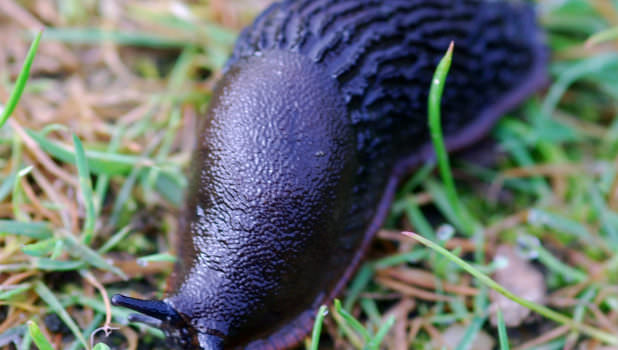The animal we love to hate – The Slug
A slug is basically a snail without a shell and did, in fact, evolve from the snail. They have two pairs of tentacles which can be regrown if lost. The upper tentacles detect light and dark and are sensitive to certain smells while the lower ones are used for feeling and tasting. They are hermaphrodites having both male and female sex organs and although some species of slug need another to mate with others can fertilise their own eggs. In its lifetime (on average 12 months) a slug can lay about 500 eggs which survive for years only hatching when the conditions are right.
There are approximately 30 species of slug of which only four are the main pests. These four cause approximately £8 million in damage to vegetable crops each year. On average a UK garden is home to over 20,000 slugs and it is estimated that an acre of farmland can support over 250,000. Only 5% of the population are above ground at any one time; 95% are underground munching their way through seeds, seedlings and roots as well as laying eggs.
Like everything in an ecosystem, however, slugs have a role. They are efficient composters breaking down rotting vegetation and turning it into nutrients for plants, as well as being a source of food themselves for many other creatures including beetles, slow worms, hedgehogs, toads, birds and especially frogs. If you must use slug pellets to control them (some think they are not a very successful method) follow the instructions carefully or you will be killing more wild life than just the slugs. As an alternative why not encourage some of their predators into your garden instead!
|
The Grey Field Slug Varies but is normal- ly light brown with a chain of darker veins and blotches. Feeds most commonly on seeds and plants above ground and is a major threat to ce- real crops. |
The Garden Slug Brown in colour. Attacks both leaf and root crop, and is a major pest of pota- toes. |
Large Red or Black Slug |
Common Keeled Slug |
Leopard Slug OTHER SLUGS! |
Did You Know?
- Slugs transport oxygen round their bodies using a copper-based molecule called haemocyanin giving the them light blue or green blood.
- Slugs have been present in the British Isles since the end of the last ice age.
- Slugs don’t have teeth or tongues. They have a special organ called a radula that has thousands of tiny protrusions that help them grind up their food.
- One individual field slug has the potential to produce about 90,000 grandchildren
- The slime produced by terrestrial molluscs (slugs and snails) has interesting properties which have been utilized for centuries for the treatment of minor wounds and other skin disorders such as warts.







